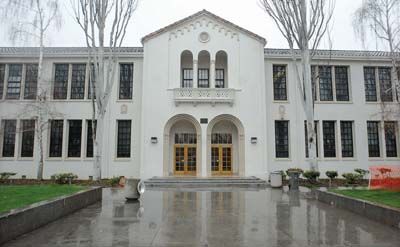A new grading system—one that calls for students to receive three separate marks per class in the categories of academics, citizenship and work habits—will be expanded for the 2018-19 school year at San Benito High School.
It likely will mean more work for teachers, but administrators are hopeful the more complex system will give parents and students a more comprehensive look at student learning.
Most ninth- and 10th-grade classes will follow the new grading practices that were piloted in select freshman classes last year, according to district Educational Services Director Elaine Klauer.
Some 11th- and 12th-grade classes will also participate in the 0-4 scale, rather than the traditional F-to-A grading practice, but the focus will be on the freshman and sophomore classes in the second year of the program, according to staff.
The purpose “is to provide students and parents with a snapshot of our students’ academic and citizenship/work habit performance,” Klauer said.
Academic grades are based on student proficiency and not by nonacademic factors, such as citizenship and work habits, which will be evaluated separately.
“Students will receive three separate marks,” Klauer explained, one for their academic grade, a second for their citizenship performance and a third for work habit performance.
Klauer clarified that all college transcript information will be the same, because students will receive a letter grade at the end of each six-week grading period and a final semester grade in the fall and spring. Students’ grade point averages will be tabulated based on that. The 0-4 rubric scale is applied to all assignments leading up to the final A-F grade, Klauer added.
The new grading practices at SBHS encompass four main ideas: Students will be provided feedback regarding progress and learning; they will have multiple opportunities to demonstrate learning; academic and citizenship/work habits will be graded separately; and students will receive an academic grade on a rubric scale of 0-4 and a citizenship/work habit grade (O-Outstanding, S-Satisfactory, NI-Needs Improvement, U-Unsatisfactory).
“Students still have a GPA, and all A-F marks are academic grades,” said Klauer. “All NI and U marks will also receive a comment regarding how to improve in these areas since citizenship and work habits are critically important in the overall development of our students.”
The district hired consultant Tom Hierck, who works with districts on essential standards, assessments and grading practices to formulate and implement the new grading system at SBHS. Hierck also most recently authored “Grading For Impact,” which is based on Winneconne High School in Wisconsin. He also consulted two California high schools, according to Klauer.
“Students will be assessed on content standards, and some standards may encompass several targets while others may encompass very few,” Klauer said. “Learning targets are derived from the standards and become the basis for assessment, instruction and ultimately the feedback that is communicated to students and families for reporting purposes.”
Ninth- and 10th-grade teachers, who recently attended a two-day workshop on grading practices on campus this month, will not penalize students for late work, but rather provide them with opportunities to get the work done for credit, according to staff.
“Research does not show that penalties (such as zeroes in the gradebook) encourage students,” Klauer said. “We do not believe in artificially inflating grades through the use of extra credit. We commit that grades are reflective of student proficiency toward learning standards.”
Klauer contends that “extra credit is not needed” in the new system because “students are given multiple opportunities to demonstrate master of key concept/target.”
“SBHS is excited to enter the second year of new grading practices for ninth- and 10th-grade courses. The goal is to continue the rollout each year with full participation by all courses,” Klauer said. “SBHS will continue to monitor the new practices by looking at grade data, reviewing the use of Academic Focus Time with the new bell schedule, and reviewing survey data from all stakeholders.”
Grading with a Rubric Score of 0-4
- 4: Student demonstrates mastery of the standard(s)/learning target(s).
- 3: Student is approaching mastery of the standard(s)/learning target(s) with few mistakes.
- 2: Student is making progress toward mastery of the standard(s)/learning target(s).
- 1: Student demonstrates some grade level mastery but is in serious danger of failing.
- 0: Student does not show any evidence of mastery.










